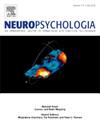Towards a genetics of semantics? False memories and semantic memory organization in Williams syndrome
IF 2
3区 心理学
Q3 BEHAVIORAL SCIENCES
引用次数: 0
Abstract
Williams syndrome (WS) is a rare genetic neurodevelopmental disorder caused by microdeletion of a critical region on chromosome 7q11.23. At the cognitive level, it is usually characterized by moderate intellectual disability and deficits in visuospatial skills, while showing relative strengths in verbal skills and nonverbal reasoning. Despite their apparent good performance with verbal skills, previous studies have suggested that the structure of semantic memory may be altered in people diagnosed with WS. In this study, we explored the organization of semantic memory in WS through the Deese-Roediger-McDermott (DRM) paradigm, a task in which participants are induced to produce false memories through semantic associations. 24 participants with WS and 24 controls matched for gender and verbal mental age participated in the study. Results showed that the WS group, compared to the control group, had less false memories of critical lures, and made associations with words less related to the items studied. Taken together, these results suggest that semantic memory organization may be atypical in WS. We discuss how certain genes usually associated with the WS cognitive phenotype, GTF2I and GTF2IRD1, might modulate the development of brain areas responsible for semantic processing, ultimately producing atypical associations between words in the semantic networks of the mental lexicon.
走向语义学的遗传学?威廉姆斯综合征的错误记忆与语义记忆组织
威廉姆斯综合征(WS)是一种罕见的遗传性神经发育障碍,由染色体7q11.23上一个关键区域的微缺失引起。在认知水平上,它通常表现为中度智力残疾和视觉空间技能缺陷,而在语言技能和非语言推理方面表现出相对优势。尽管他们在语言技能方面表现良好,但先前的研究表明,被诊断为WS的人的语义记忆结构可能会发生改变。在这项研究中,我们通过Deese-Roediger-McDermott (DRM)范式探索了WS中语义记忆的组织,在DRM范式中,参与者通过语义关联诱导产生错误记忆。24名WS患者和24名性别和语言心理年龄相匹配的对照组参与了这项研究。结果表明,与对照组相比,WS组对关键诱饵的错误记忆较少,并且与所研究项目相关的单词产生的联想较少。综上所述,这些结果表明语义记忆组织在WS中可能是非典型的。我们讨论了通常与WS认知表型相关的基因GTF2I和GTF2IRD1如何调节负责语义处理的大脑区域的发育,最终在心理词汇的语义网络中产生单词之间的非典型关联。
本文章由计算机程序翻译,如有差异,请以英文原文为准。
求助全文
约1分钟内获得全文
求助全文
来源期刊

Neuropsychologia
医学-行为科学
CiteScore
5.10
自引率
3.80%
发文量
228
审稿时长
4 months
期刊介绍:
Neuropsychologia is an international interdisciplinary journal devoted to experimental and theoretical contributions that advance understanding of human cognition and behavior from a neuroscience perspective. The journal will consider for publication studies that link brain function with cognitive processes, including attention and awareness, action and motor control, executive functions and cognitive control, memory, language, and emotion and social cognition.
 求助内容:
求助内容: 应助结果提醒方式:
应助结果提醒方式:


